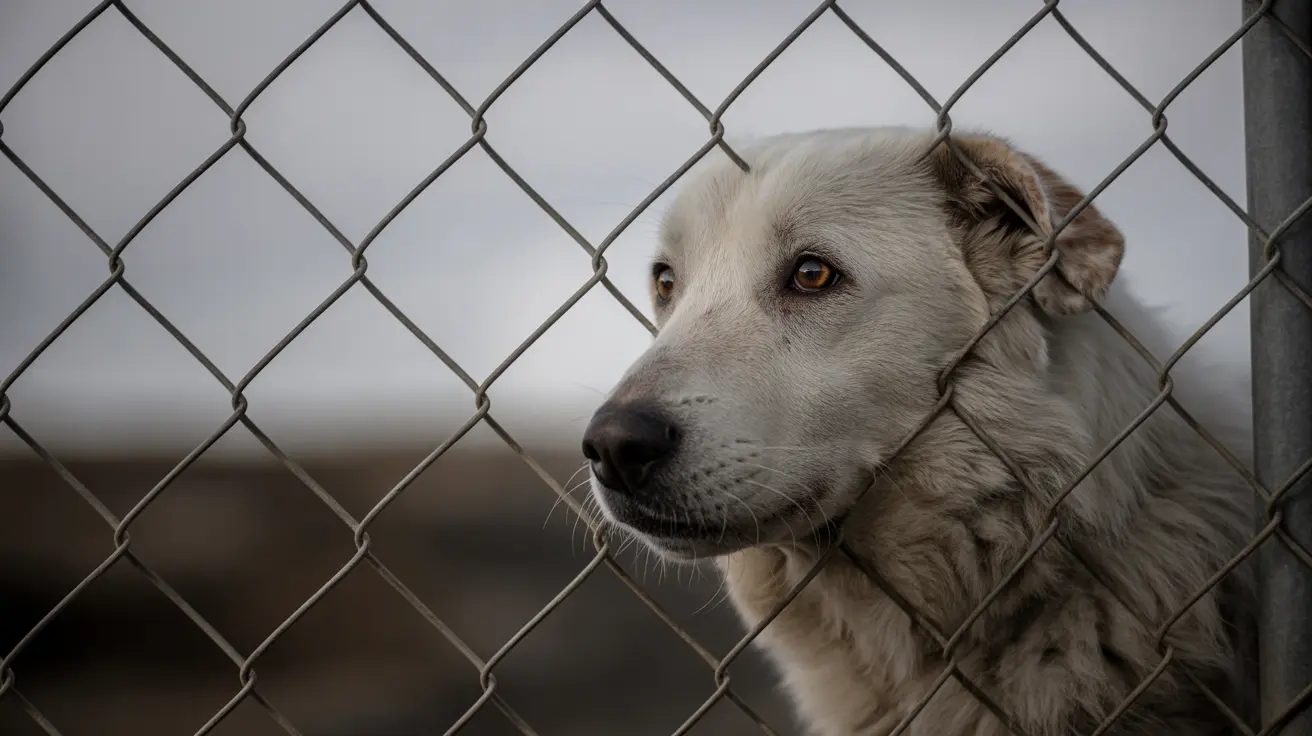Dog Fur Dyeing Ethics: Understanding the Safety Concerns and Welfare Debate
The practice of dyeing dogs' fur to resemble pandas, leopards, or other animals has sparked intense debate across social media platforms and veterinary communities. While some view creative pet grooming as harmless fun, others raise serious concerns about animal welfare and the ethical implications of altering pets' natural appearance for human entertainment. This controversial trend has divided pet owners, professional groomers, and animal welfare advocates, creating a complex discussion about what constitutes appropriate care for our canine companions.
Understanding the science behind dog fur dyeing ethics requires examining both the physical safety aspects and the psychological impact on animals. As viral videos continue to showcase dramatically transformed dogs, it becomes crucial for pet owners to separate fact from fiction and make informed decisions based on veterinary evidence rather than social media trends. The stakes are high—improper dyeing practices can lead to serious health complications, while even "safe" methods raise questions about unnecessary stress and the fundamental respect we owe our animal companions.
The Health Risks: Why Human Hair Dyes Are Dangerous for Dogs
The most critical aspect of dog fur dyeing ethics centers on the severe health risks associated with using human hair products on pets. Human hair dyes contain toxic chemicals including ammonia, peroxide, and para-phenylenediamine—a known carcinogen that can cause irreparable damage to a dog's immune system. These substances can trigger severe allergic reactions, chemical burns, skin disease, and even cancer in dogs whose skin is more sensitive and permeable than human skin.
Cats face even greater risks due to their natural self-grooming behavior. When cats lick their dyed fur, they can ingest toxic chemicals that may cause poisoning or death. The veterinary community unanimously agrees that human-grade dyes should never be used on any pet, regardless of the occasion or desired effect. Professional groomers who prioritize animal health refuse to use anything other than pet-specific products, understanding that a dog's well-being must always take precedence over aesthetic goals.
Pet-Safe Alternatives: Understanding the Options and Limitations
While human hair dyes pose clear dangers, pet-safe alternatives do exist, though they come with their own considerations. Professional groomers may use dog-safe dyes that are specifically formulated without the harmful chemicals found in human products. These pet-graded, all-natural, and organic dyes are generally safer options, but veterinarians recommend using them only sporadically for special occasions rather than as regular grooming practices.
Temporary alternatives include unsweetened Kool-Aid, natural food coloring made from ingredients like beet juice, turmeric, and spinach extract, as well as fur chalk. These options are generally non-toxic and wash out more easily than permanent dyes. However, even with these safer alternatives, the fundamental question remains whether the practice serves the dog's interests or merely satisfies human desires for novelty and social media attention.
The Stress Factor: Psychological Impact on Dogs
Beyond physical safety concerns, dog fur dyeing ethics must address the psychological stress that grooming procedures can impose on animals. The dyeing process typically involves restraining dogs for extended periods while applying chemicals to their fur—an experience that many dogs find uncomfortable or frightening. Professional groomers emphasize the importance of monitoring dogs for signs of stress throughout the process and stopping immediately if animals show distress.
Dogs may dislike the dyeing process for various reasons: unfamiliar smells, prolonged restraint, or sensitivity to the application methods. Unlike humans who choose to color their hair, dogs cannot consent to these procedures or understand their purpose. This raises fundamental ethical questions about subjecting animals to potentially stressful experiences purely for human entertainment or social media content.
Professional Guidelines and Safety Protocols
Professional groomers who offer dyeing services follow strict safety protocols to minimize risks. These guidelines include conducting patch tests before full application to check for allergic reactions, avoiding sensitive areas like eyes and mouth, using only pet-safe products purchased from certified suppliers, and maintaining constant supervision to prevent dogs from licking treated areas.
Many professional salons inquire about the reasons behind dyeing requests and may refuse service if the motivation appears to be purely vanity-driven rather than for special occasions. This ethical stance reflects the grooming industry's commitment to animal welfare over profit. Veterinarians consistently recommend consulting with professionals rather than attempting home dyeing, as improper application techniques can increase the risk of adverse reactions.
The Social Media Influence and Viral Content Concerns
Social media platforms have amplified the visibility of extreme pet grooming practices, creating viral content that may encourage imitation without proper safety considerations. The Veterinary University of Hannover specifically recommends avoiding engagement with viral videos showing dyed animals—including liking or commenting—to prevent feeding algorithms that promote potentially harmful content.
While some professional groomers use their platforms responsibly to showcase safe techniques and raise funds for animal welfare organizations, the broader trend raises concerns about treating pets as entertainment props. The desire for social media fame can overshadow animal welfare considerations, leading to increasingly extreme modifications that prioritize views over veterinary best practices.
Legal and Regulatory Perspectives
The controversy surrounding dog fur dyeing ethics has prompted legislative responses in some regions. Several states in the United States have implemented bans on animal dyeing due to welfare concerns, recognizing that these practices may constitute unnecessary stress or potential harm to animals. These legal restrictions reflect growing awareness that cosmetic alterations of pets should be subject to the same scrutiny as other animal welfare issues.
The regulatory landscape continues to evolve as lawmakers grapple with balancing personal freedoms with animal protection. Professional grooming organizations increasingly advocate for industry standards that prioritize animal welfare over aesthetic trends, pushing for certification requirements and safety protocols that protect both pets and practitioners.
Ethical Alternatives: Helping Animals Without Compromising Welfare
For those interested in creative pet care without the ethical concerns of dyeing, several alternatives exist that prioritize animal welfare. Professional grooming techniques like creative clipping, safe accessories, and temporary decorations can achieve aesthetic goals without chemical treatments. These approaches allow for creative expression while respecting the animal's natural state and minimizing stress.
Some groomers focus their creative energies on helping shelter dogs become more adoptable through basic grooming and care that enhances their natural appearance without artificial alterations. This approach demonstrates how grooming skills can serve animal welfare directly, increasing adoption chances through improved presentation while maintaining ethical standards.
Making Informed Decisions: Guidelines for Pet Owners
Pet owners considering any form of cosmetic alteration for their animals should prioritize their pet's well-being over aesthetic desires. This involves consulting with veterinarians about product safety, choosing certified professionals with experience in pet-safe techniques, and honestly evaluating whether the procedure serves the animal's interests or merely human vanity.
Before proceeding with any dyeing procedure, owners should consider their pet's individual temperament, stress tolerance, and health status. Dogs with sensitive skin, respiratory issues, or high anxiety levels may not be suitable candidates for dyeing regardless of product safety. The decision should always favor the animal's comfort and health over human preferences for appearance modification.
Frequently Asked Questions
Is it ever safe to dye a dog's fur?
While pet-safe dyes exist and can be used with proper precautions, veterinarians generally recommend against dyeing pet fur except for very special occasions. Even pet-safe products carry risks of allergic reactions, stress, and skin sensitivity. Human hair dyes should never be used on dogs under any circumstances due to their toxic ingredients.
What ingredients should I avoid in pet hair dyes?
Avoid any products containing ammonia, peroxide, para-phenylenediamine, or other chemicals found in human hair dyes. These substances can cause chemical burns, allergic reactions, and serious health complications in dogs. Only use products specifically labeled as pet-safe and purchased from certified pet supply retailers.
How can I tell if my dog is stressed during the dyeing process?
Signs of stress in dogs include panting, drooling, trembling, attempting to escape, aggressive behavior, or unusual vocalizations. If you observe any of these signs, stop the procedure immediately. Dogs may also show stress through changes in posture, excessive movement, or attempts to lick or bite at treated areas.
Are there legal restrictions on dyeing pets?
Yes, several U.S. states have implemented bans on animal dyeing due to welfare concerns. These laws recognize that cosmetic alterations may constitute unnecessary stress or potential harm to animals. Check local regulations before considering any dyeing procedures, as violations may result in legal consequences.
What are safer alternatives to dyeing for creative pet grooming?
Safer alternatives include temporary options like fur chalk, creative clipping techniques, safe pet accessories, and natural food coloring for very limited applications. These methods allow for creative expression without the chemical risks associated with permanent dyes, though they should still be used sparingly and with proper supervision.
How often is it safe to dye a dog's fur?
Professional veterinarians and groomers recommend dyeing only sporadically for special occasions, not as a regular practice. Frequent dyeing can lead to skin sensitivity, coat damage, and cumulative stress. Even with pet-safe products, repeated chemical exposure increases the risk of adverse reactions and long-term health issues.
Should I attempt to dye my dog's fur at home?
Home dyeing is not recommended due to the increased risk of improper application, inadequate safety precautions, and inability to respond appropriately to adverse reactions. Professional groomers have the training, experience, and proper facilities to minimize risks, though even professional dyeing carries inherent concerns about animal welfare and stress.
Conclusion
The debate surrounding dog fur dyeing ethics ultimately reflects broader questions about our responsibilities as pet owners and the boundaries of appropriate animal care. While pet-safe products and professional techniques can reduce physical risks, the fundamental ethical concerns about subjecting animals to unnecessary stress for human entertainment remain valid. The veterinary community's general recommendation against dyeing, combined with legal restrictions in some areas, suggests that the practice sits uncomfortably within modern animal welfare standards.
For pet owners drawn to creative grooming, the key lies in prioritizing animal welfare over aesthetic goals and choosing alternatives that respect their pets' natural state while meeting their genuine needs for health and happiness. As our understanding of animal psychology and welfare continues to evolve, the most ethical approach may be to focus our creative energies on practices that directly benefit our pets rather than serving primarily human desires for novelty or social media content.






